Breathing Together
Lara Farina
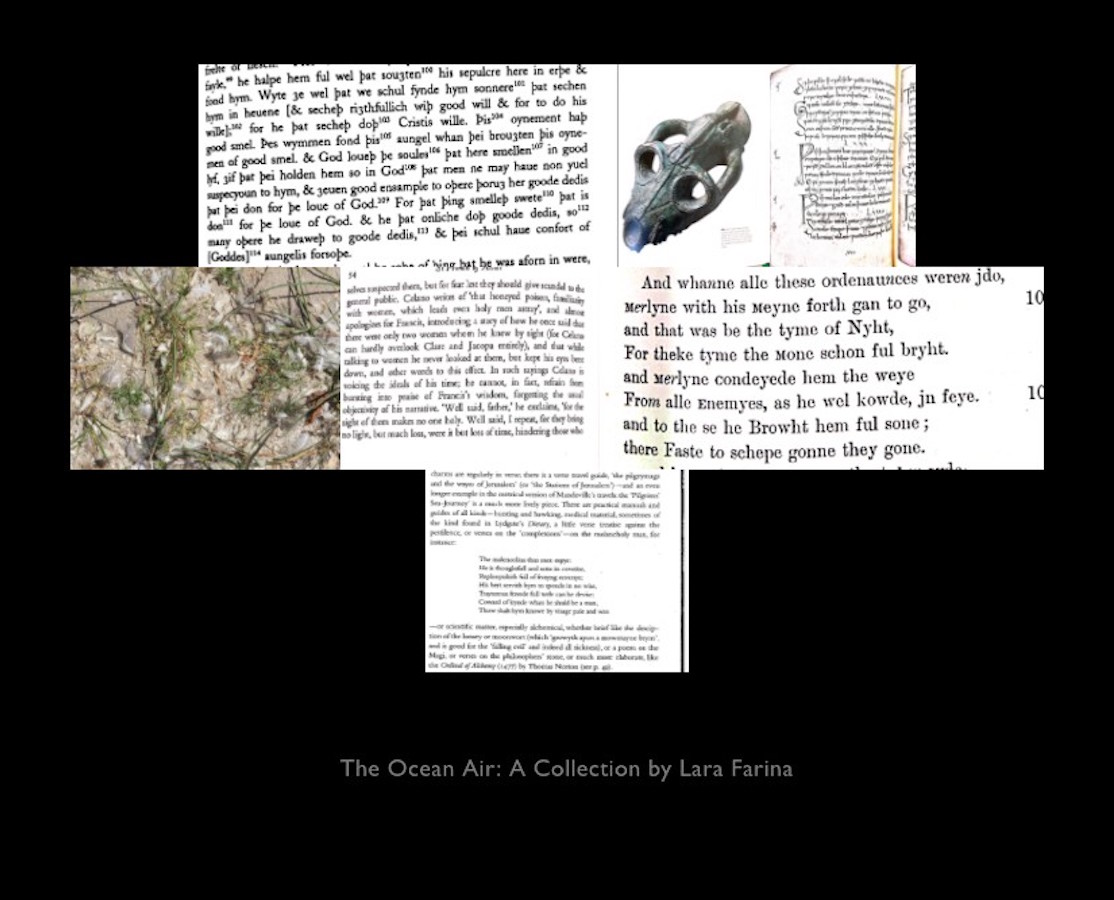
Memory/Place
The
shores I recollect most easily are the beaches in and around Half Moon Bay,
California, not far from my childhood home. These are not the placid,
house-lined sands of the east coast of the USA, where I sometimes vacation now.
The Pacific that I recall is a cold, turbulent ocean, smashing and hissing its
way onto beaches mostly empty of people. The sand, ground fine, is flanked by
crumbly cliffs and is frequently sopped by a thick, chilling fog. Seawater
froths into the air, and the scraggy foliage on the cliffs is resinous and pungent.
 Yerba Santa.
Eucalyptus, Monterey Pine, and Yerba
Santa breathe out astringent aromas, the smell more Vapo-Rub
than Coppertone. Winds snap against the skin. This salty, sharp atmosphere
almost forces beachgoers to breathe deeply. When I’m there, my eyes squint
against the wind and moisture (or wind and sun on a lucky day) and my lips pull
back and up into a slight smile as, without thinking, I suck in the air for a few
purifying inhalations.
Yerba Santa.
Eucalyptus, Monterey Pine, and Yerba
Santa breathe out astringent aromas, the smell more Vapo-Rub
than Coppertone. Winds snap against the skin. This salty, sharp atmosphere
almost forces beachgoers to breathe deeply. When I’m there, my eyes squint
against the wind and moisture (or wind and sun on a lucky day) and my lips pull
back and up into a slight smile as, without thinking, I suck in the air for a few
purifying inhalations.
Revisiting the images gathered into The Middle Shore, I noticed that when I saw ones I liked, not only did I smile, eyes crinkling and lips curling, I also inhaled deeply as my mouth drew up and nose flattened. It’s the same thing I do when I go to Pescadero, San Gregorio, Dunes, or any of the unmarked “Hidden” beaches off Highway 1 (an aptly elemental road number for a place of alchemical mixture). Rendered in emotional terms, it’s an expression of cautious delight. I feel pleasure in encountering something energetically charged, something I recognize as capable of transferring some kind of vitality. Inhaling the electric presence, prickling with in-spiration, I gather myself and swell with breath.
But the posture’s not entirely receptive.
 Exhaling Apocalypse.
There’s a slight bracing and tightening
of my gut that comes with the squinty smile, the gathering breath — perhaps
the result of learning this routine on that rough coast. I honed that
configuration of face, breath, and body in a place where I was at times
trounced by the surf and unable to find my way up to air. There were panicked, painful,
salt-lunged moments, and I think of the local surfing legend who now looks like
he’s been punched in the face a thousand times, his skin thickened in defense
against the elements. Perhaps I am cautious because I know the lungs of the
ocean are stronger than mine. Perhaps I am cautious with the Middle Shore items
because my profession, like swimming in that ocean, demands careful positioning
if I am not to be swept out to sea or thrown onto the rocks.
Exhaling Apocalypse.
There’s a slight bracing and tightening
of my gut that comes with the squinty smile, the gathering breath — perhaps
the result of learning this routine on that rough coast. I honed that
configuration of face, breath, and body in a place where I was at times
trounced by the surf and unable to find my way up to air. There were panicked, painful,
salt-lunged moments, and I think of the local surfing legend who now looks like
he’s been punched in the face a thousand times, his skin thickened in defense
against the elements. Perhaps I am cautious because I know the lungs of the
ocean are stronger than mine. Perhaps I am cautious with the Middle Shore items
because my profession, like swimming in that ocean, demands careful positioning
if I am not to be swept out to sea or thrown onto the rocks.
Why would anyone grin, cautiously or not,
at a bunch of pixels? Greeting inanimate objects — whether shells and pebbles on
a beach or texts and images on a computer screen — with a smile and a breath
makes no sense.
Stephanie Trigg’s phrase from “Chaucer’s Silent Discourse” (2016). On the history of facial
expression, see the essays in postmedieval 8.1 (2017), ed. S. Downes and S. Trigg. The smile, at least, seems a weird use of facial expression, an
instinct gone awry. If the human face speaks a language, a “silent discourse,”
it’s at most talking to others of our species and, quite possibly, in much
smaller circles than that. Even humans risk ostracism from the
body-language community if they cannot produce the muscular actions that make
up the face’s expressive vocabulary. Non-humans are mutes in this medium of human
flesh: a sandpiper doesn’t lift its eyebrows in recognition; seaweed can’t
relax its mouth.
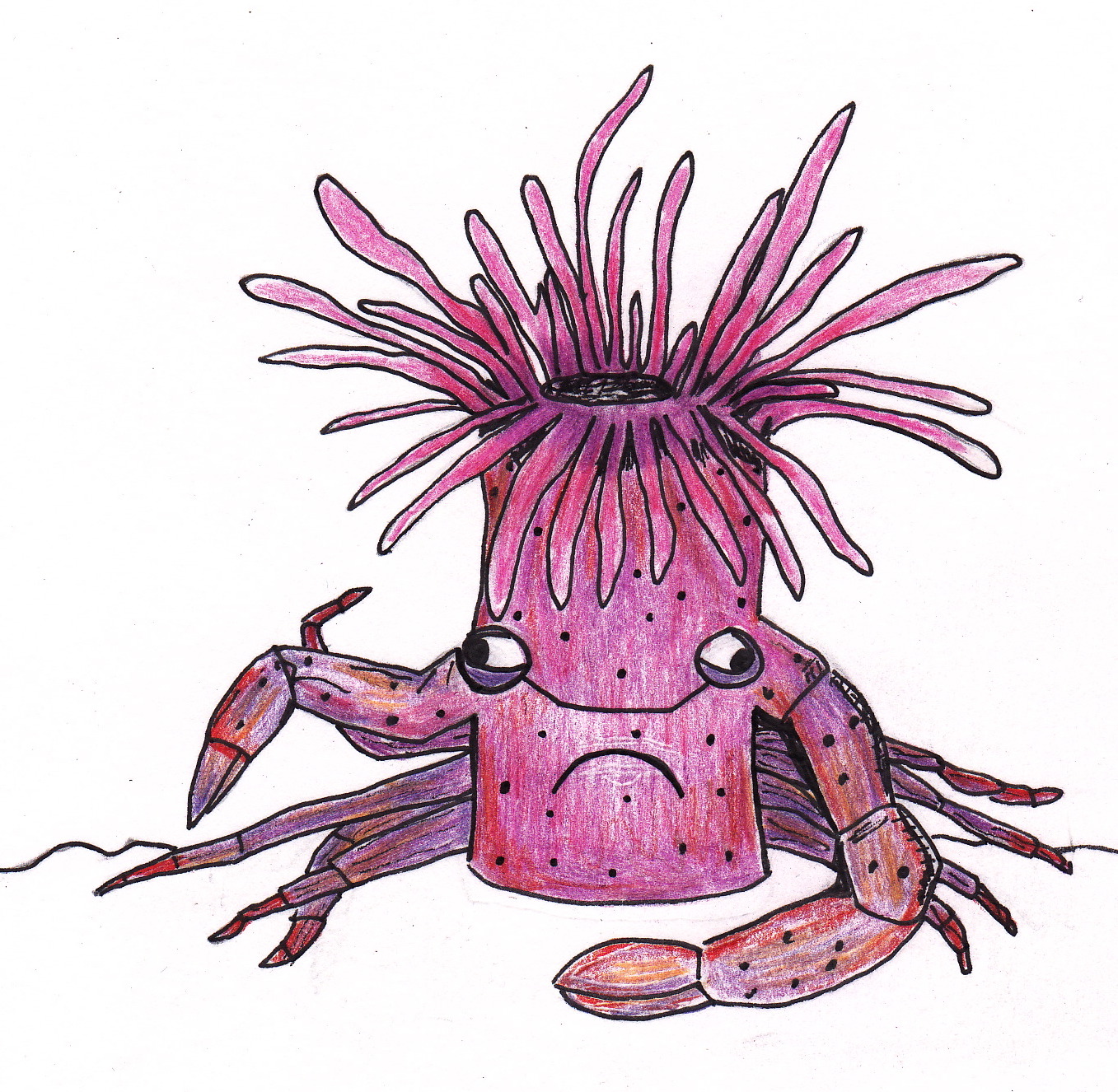 And yet… A smile’s efficient signaling is wasted
on clump of feathers or an azure map of the medieval sea; the attempt appears some
kind of sad evolutionary mistake. Perhaps such smiles are aimed not at
pebbles or hermit crabs or maps but, really, at other humans, as a kind of
triangulated offer of solidarity? When we smile at things together, we can
become a bigger, less vulnerable body. We may pull our smiles around us like a
blanket or a human-made shell. But what if no one is looking? Do we smile just
in case?
And yet… A smile’s efficient signaling is wasted
on clump of feathers or an azure map of the medieval sea; the attempt appears some
kind of sad evolutionary mistake. Perhaps such smiles are aimed not at
pebbles or hermit crabs or maps but, really, at other humans, as a kind of
triangulated offer of solidarity? When we smile at things together, we can
become a bigger, less vulnerable body. We may pull our smiles around us like a
blanket or a human-made shell. But what if no one is looking? Do we smile just
in case?
I prefer to understand my smile as facilitating the breath. Unlike smiling — or scowling, gaping, puckering, crying, and even staring blankly — breathing generally escapes reduction to a linguistic signal. A breath like a sigh or gasp can be a statement, but most breath is not. It is a technique of being and feeling rather than one of meaning, and, invisible, it confounds demands for legibility. Most crucially, breathing reminds us that we are in constant exchange with our surroundings and even that we do not end at our skin. We exceed ourselves with our breath. This is why the sense of smell, which registers that exchange, is so often recruited for intimacy, so often conjoined with vulnerability. Some theorists of social affect postulate that olfactory sensation is a major, perhaps even primary, means by which feelings circulate in groups. See, in particular, Brennan (2004). Our breath-bodies overlap and mingle. When I inhale upon seeing something delightful, I’m translating sight into a more powerful sensation: tactile, kinetic, olfactory, auditory, and atmospheric. I’m collecting its impact, using it to breathe deeper, in concert with all kinds of things.
A “memory place” is not just an image, nor is it just a name, though these things do occupy memory places. The “place,” or ground of occupation, is within as well as around the one remembering, for it is made from a particular coordination of body movements, like breathing, balancing, relaxing, and tensing. Just as rhythm makes lyrics more memorable, the body’s action helps images linger. Medieval monastics were adept at crafting memory-places, which they did to facilitate their recollection of scripture. On monastic memory techniques, see Carruthers (1990) and, for primary sources, Carruthers and Ziolkowski (2002). Their ascetic routines allowed for heightened awareness of the small movements of the body, invisible stirrings, slight shifts of position. Returning to a posture, a felt alignment, they realized, could bring back texts and images associated with it, pieces of the sacred Word. All you needed to do was notice how you breathe, how you sit, how you feel. While medieval writers thought memory-places to be the product of human discipline, I want to acknowledge the imprint of other forces on their creation: a salty wind, a cold spray, the odor of eucalyptus.
Process/Feeling
Unlike
the other contributors to The Middle
Shore, I made two different collections for this project. The first was the bank of images for Low Tide 1. Assembling this, I sought a randomness that would
approximate the depositing of wreckage on the beach, and I opted for a haptic approach
to achieving a disorganized scatter. With my eyes closed, I let my hands glide
over the spines of books shelved in my university’s library. When I felt
something interesting,
 or my hand simply came to rest, I
pulled out the volume and turned, blindly, to one of its pages. Aiming my
cellphone camera where my eyes first rested, I took a picture of the thing –
the very thing – I found: an area of
a page of a book. Honoring the place of chance in collecting Low Tide meant
refusing to edit that thing, no matter how disappointing the discovery. I
applied a similar method for surfing the internet’s archives: a randomly chosen
word from a dictionary, added to “medieval,” brought me to whatever the hidden
algorithms decided. Collected together, these unidentified finds made the Low
Tide 1 grouping that I shared with future contributors to the
Beachcombing panel in Santa Barbara.
or my hand simply came to rest, I
pulled out the volume and turned, blindly, to one of its pages. Aiming my
cellphone camera where my eyes first rested, I took a picture of the thing –
the very thing – I found: an area of
a page of a book. Honoring the place of chance in collecting Low Tide meant
refusing to edit that thing, no matter how disappointing the discovery. I
applied a similar method for surfing the internet’s archives: a randomly chosen
word from a dictionary, added to “medieval,” brought me to whatever the hidden
algorithms decided. Collected together, these unidentified finds made the Low
Tide 1 grouping that I shared with future contributors to the
Beachcombing panel in Santa Barbara.
I took my Half Moon Bay memory place with
me to the library when I compiled Low Tide. Think of it, the wild spray of the
gusty, lusty Pacific inside the bland, temperature-controlled stillness of the
university library, which, like most other American book-places, smells
primarily of Starbucks if it smells at all. There are limits, of course, on how
much one environment can be transfused into another,
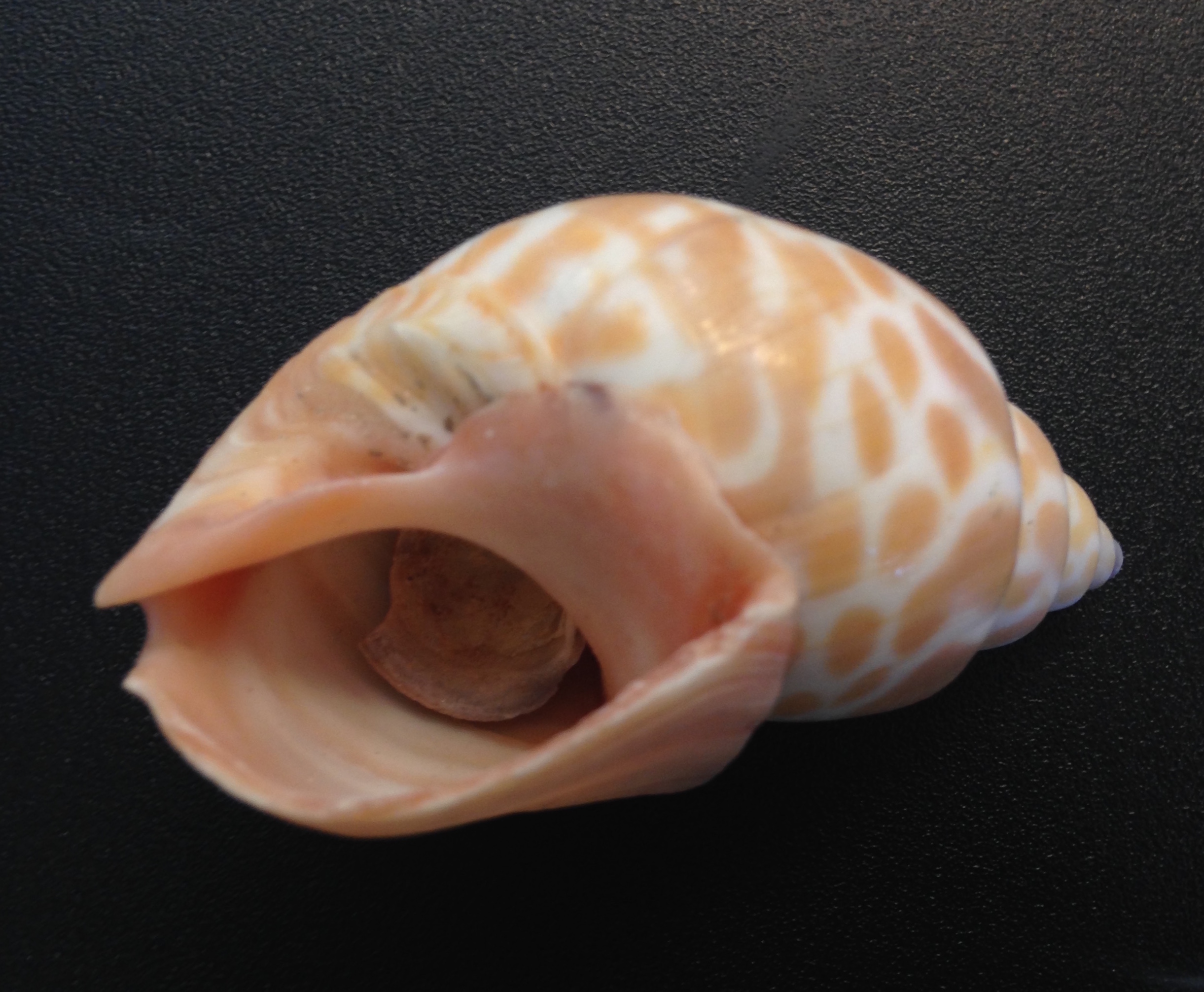 Shell Ear. URI.
and I wasn’t thinking, then, about my
breath — my breathing then (as now) was partially retroactive, helping me move
through/with my memories, and mostly unconscious. But I did, then, consciously have
in mind an image I’d made of the future panelists and audience all sitting in
the sand at the Santa Barbara beach, drawing with our fingers as we talked,
straining to be heard over the wind, and squinting in the unrelenting southern
California sun. The real panel did not take place outside on the beach; I
always knew that it couldn’t, with our reliance on A/V to project sounds and
images. But I persisted in imagining that it would, probably because I needed
those sensations of atmospheric resistance to pursue the metaphor of archive as
shore.
Shell Ear. URI.
and I wasn’t thinking, then, about my
breath — my breathing then (as now) was partially retroactive, helping me move
through/with my memories, and mostly unconscious. But I did, then, consciously have
in mind an image I’d made of the future panelists and audience all sitting in
the sand at the Santa Barbara beach, drawing with our fingers as we talked,
straining to be heard over the wind, and squinting in the unrelenting southern
California sun. The real panel did not take place outside on the beach; I
always knew that it couldn’t, with our reliance on A/V to project sounds and
images. But I persisted in imagining that it would, probably because I needed
those sensations of atmospheric resistance to pursue the metaphor of archive as
shore.
This desire for a certain amount of
environmental discomfort, for interference in habitual movements, has a lot to
do with my becoming a medievalist in the first place.
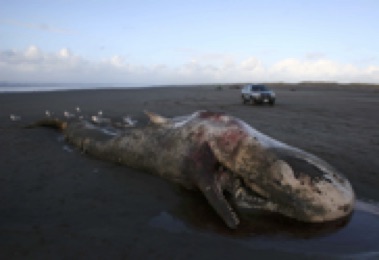 Julie Tennis, “My First Sperm Whale.” I didn’t take up medieval literature
because I could identify with its characters or because I found it easy to read
or more enjoyable than modern writing. Rather, it gave me a feeling of
something being off, a slight but not total disorientation that felt weirdly
energizing. Reading, for example, Beroul’s chaotic Romance of Tristan untethered my
habitual feeling for heroes and villains and my sense of how narrative should
work; my confusion lingered after finishing (sort of finishing? did the text
even end?); and the work’s uncanny effect stayed with me. I had entered the
landscape offered by bewilderment.
“To cause to lose one’s way, as in a wild or unknown place” (OED Online, s. v. “wilder”).
I wanted visitors to Low Tide’s beach to feel similarly bewildered by their
encounter with its unidentified contents since, for me, that animating
discomfort lies at the core of medieval studies. I hoped the “raw” fragments of
the digital shore, like the wind and sun in my fantasized future panel, would
let us tap in to our feelings for our subject.
The marketing of our discipline couldn’t be further removed from this motivation:
imagine a Medieval Studies advertisement promising students a feeling of queasy
confusion.
Julie Tennis, “My First Sperm Whale.” I didn’t take up medieval literature
because I could identify with its characters or because I found it easy to read
or more enjoyable than modern writing. Rather, it gave me a feeling of
something being off, a slight but not total disorientation that felt weirdly
energizing. Reading, for example, Beroul’s chaotic Romance of Tristan untethered my
habitual feeling for heroes and villains and my sense of how narrative should
work; my confusion lingered after finishing (sort of finishing? did the text
even end?); and the work’s uncanny effect stayed with me. I had entered the
landscape offered by bewilderment.
“To cause to lose one’s way, as in a wild or unknown place” (OED Online, s. v. “wilder”).
I wanted visitors to Low Tide’s beach to feel similarly bewildered by their
encounter with its unidentified contents since, for me, that animating
discomfort lies at the core of medieval studies. I hoped the “raw” fragments of
the digital shore, like the wind and sun in my fantasized future panel, would
let us tap in to our feelings for our subject.
The marketing of our discipline couldn’t be further removed from this motivation:
imagine a Medieval Studies advertisement promising students a feeling of queasy
confusion.
My own feelings about medieval studies, and about my gleaning the library for Low Tide, are the subject of my personal exhibit, “The Ocean Air.” To use a kitschy academic term, my collection is a “meta” collection, a collection/commentary on the experience of collecting the collection that I would then draw upon for my personal collection. I like this about my collection: its modulating circularity seems appropriately Borgesian (by which I mean satisfyingly surreal). On the collection of collections, see his short story, “The Library of Babel” (Borges, 1962). But it was surprisingly difficult, at first, to connect my feelings about the Low Tide process in general with my reaction to particular Low Tide items. Like other contributors, I worried that an ordering concept or scheme for the exhibit would override the details of my immediate responses, that affective texture would be lost. I also wrestled with the knowledge that my collecting in the library had been somewhat disappointing. My haul of random book pages was riddled with downer finds: boring things, inaccurate things, irritating things. It certainly wasn’t the cache of textual treasures that I’d normally be happy to share. While I knew this dissatisfaction had to be acknowledged in my exhibit if it was to be an honest record of curating Low Tide, re-creating those feelings for readers seemed like an exercise in perpetual bummer-ness.
My solution was to begin by noting, not
my emotions, but my physical response to Low Tide’s fragments. That I had
different breathing patterns and facial movements for different items was soon
obvious, and I noticed, too, the match of one breathing posture with my memory
place along the northern California shore. The advice to “focus on the breath”
is now everywhere in our yoga-obsessed, new New Age
culture, but we’ve hardly thought about what this focus might do for scholarly
engagements with materials. For me, noticing the quality and rhythms of my
breath allowed me a documentary facticity
 with which to begin; it was much easier to point to the fact of my breath than
it was to disentangle and name my swirling emotions, not to mention the task of
extracting particular ideas from masses of associative thoughts. My breathing
seemed a way to access a kind of somatic “pre-thought” caused by the images, an
initial response that might have been vulnerable to later editing or
suppression in my usual mode of work, when my decision-making is more
influenced by social and professional concerns. At the same time, returning to
my breath was itself a conscious strategy, a way to orient myself and to
simplify this shore full of stuff. To slow thinking, I took in the air for a few
purifying inhalations.
with which to begin; it was much easier to point to the fact of my breath than
it was to disentangle and name my swirling emotions, not to mention the task of
extracting particular ideas from masses of associative thoughts. My breathing
seemed a way to access a kind of somatic “pre-thought” caused by the images, an
initial response that might have been vulnerable to later editing or
suppression in my usual mode of work, when my decision-making is more
influenced by social and professional concerns. At the same time, returning to
my breath was itself a conscious strategy, a way to orient myself and to
simplify this shore full of stuff. To slow thinking, I took in the air for a few
purifying inhalations.
Writing/Circles
Scholarly writing usually leaves little
room for either messiness or explicit documentation of the scholar’s affects.
When I first took up medieval studies, “appreciative” criticism still
circulated, though it was fast losing ground to psychoanalytic, New Historical,
and political methods of critique. While that kind of appreciation certainly
had its problems,
Largely written by elite white men, it tended to universalize their experiences and
then claim those experiences were inherent in the object(s) of study.
it did leave room for exploration of scholars’ own emotional responses to the
aesthetic dimensions of their studied objects. Since then, scholarly writing in
the humanities has generally tried to shed its subjective dimensions, or at
least regard them suspiciously, as embedded shards of ideological weapons. This
attempted removal of idiosyncratic feelings from our work is assisted by our
practice of an argumentative style that demands rigorous pruning of unnecessary
observations. The unnecessary,
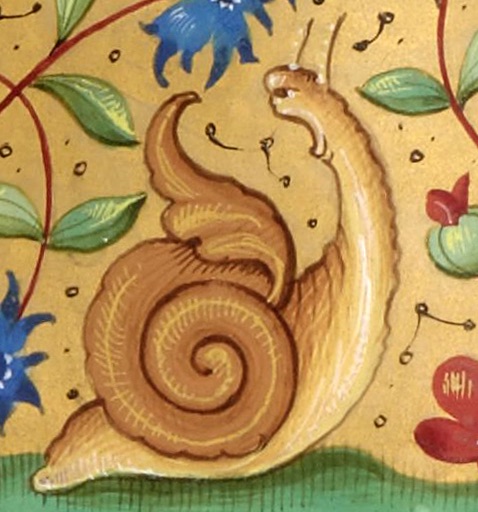 the merely decorative, the whimsically perlocutionary
is exactly the most affectively modulated portion of our writing. It is also a
part that we may be more reluctant to lose than we admit. After the demise of
appreciative criticism, Jane Gallop noted that readers of academic writing
habitually scan footnotes, prefaces, and acknowledgements pages for traces of
the personal, now exiled to margins of scholarly publication: “it has been the
pleasure of […] scholars to speculate endlessly on the connection between the
knowledge in the main text and the relations glimpsed in dedication, footnote,
and so on” (Gallop, 1996, 1150). I’m similarly fascinated by scholars’ and
editors’ choices of archival images for title pages, book covers, Facebook
avatars, and other non-argumentative spaces open to exhibiting our whims,
urges, and affections.
An example: Farina (2013), 17.
the merely decorative, the whimsically perlocutionary
is exactly the most affectively modulated portion of our writing. It is also a
part that we may be more reluctant to lose than we admit. After the demise of
appreciative criticism, Jane Gallop noted that readers of academic writing
habitually scan footnotes, prefaces, and acknowledgements pages for traces of
the personal, now exiled to margins of scholarly publication: “it has been the
pleasure of […] scholars to speculate endlessly on the connection between the
knowledge in the main text and the relations glimpsed in dedication, footnote,
and so on” (Gallop, 1996, 1150). I’m similarly fascinated by scholars’ and
editors’ choices of archival images for title pages, book covers, Facebook
avatars, and other non-argumentative spaces open to exhibiting our whims,
urges, and affections.
An example: Farina (2013), 17.
Despite our current conventions of
writing, then, we seem to privately pursue the pleasures of tracing unspoken
affiliations between people, places, and things. But a style of scholarship
that evidences affective actions more directly must, I think, make room for some
“unscholarly” practices: specifically decoration, contradiction, and
repetition. Textual decoration,
“Serious medievalism as a particularly inflected poetics of decorating temporal and
historical surfaces” (Remein, 2014, 103).
whether a revival of the lively marginalia typical of medieval manuscript
pages or a new form of ornament unique to digital media, can provide a place
for the things that impress themselves on us before we shake them off in the
interest of decorum. We don’t actually lose these impressions anyway: affect is
sticky, hanging around for an unreasonable amount of time. A person’s affect is
also out of sync with itself, since the body can move in different directions
simultaneously (breathing can follow one “emotional” pattern, while heart rate
and skin temperature match with others). And it is recursive;
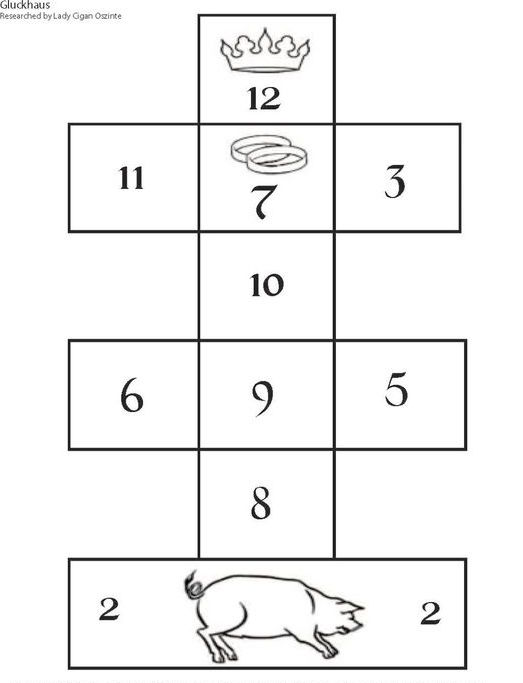 Roll again.
our feelings do not move ever forward but circle to the memory places we
recreate with new collaborators in new contexts. Poetry gets this. Chaucer’s
dream visions (Book of the Duchess, Parliament of Fowls, House of Fame, and Legend of Good Women) always return to trembling houses/fields of
text and image, with one familiar narrative proceeding one way; another, in a
different medium, running at its own pace; and a narrator between them, aquiver
with overlapping waves of feeling.
Roll again.
our feelings do not move ever forward but circle to the memory places we
recreate with new collaborators in new contexts. Poetry gets this. Chaucer’s
dream visions (Book of the Duchess, Parliament of Fowls, House of Fame, and Legend of Good Women) always return to trembling houses/fields of
text and image, with one familiar narrative proceeding one way; another, in a
different medium, running at its own pace; and a narrator between them, aquiver
with overlapping waves of feeling.
An affectively attuned form of scholarly
writing would seem to require both rhythmic patterning and contradictory
progressions, whether in the expositive or decorative parts of the text. I
can’t claim to have produced a textual object that achieves this, but my experience
of writing for The Middle Shore has uncannily
echoed the looping, paradoxical movement of affect. Particularly in my own
exhibit and essay, my usual tendencies to rewrite obsessively spiraled further beyond
my control, though, bizarrely, I often ended up with the words I chose originally.
“ — it was at the great concert given by the Queen of Hearts, and I had to sing
‘Twinkle, twinkle little bat!
How I wonder where you’re at!’
You know the song, perhaps?”
“I’ve heard something like it,” said Alice. (Carroll, 2013, 55)
This was frustrating enough, but I also had a serious episode of déjà vu, in
which I was convinced that I had heard someone else say exactly what I had just
written for the first part of this essay. Even though I could check the text of
her talk and see that I was mistaken (not even close!), I had formed a visual
and auditory memory of her delivering the very same words to an audience. While
I have not mastered an art of writing
in circles, my subconscious self has proven highly susceptible to a suggestion
of patterning, performing stressful and confusing repetitions.
Figures of liquidity, images of oceanic submersion or quivering skins of aqueous surfaces, are common in recent theoretical discussions of sensory and affective life. Currents, eddies, and whirls coalesce and disperse in the affective subject (or populace) and in the scholarly writing about it. For Kathleen Stewart, affective sensitivity is “sort of like being a water bug, living on the surface tension of some kind of liquid. Seduced by the sense of an incipient vitality lodged in things, but keeping oneself afloat, too” (2007, 41). We are, of course, swimming in metaphor here, but figurative language, figurative thinking, often hits our bodies with the force of the literal. Perhaps we yearn for a thicker medium in which we might be suspended, one with a weightiness that better matches our feelings. Or one that will ripple perceptibly, to show us more clearly the affecting forces around us, map out who or what is requiring our little adjustments.
Stewart’s water bug, attuned but “afloat,” reminds me of the receptive/cautious posture I take at the coast of Half Moon Bay and here at The Middle Shore. I want to breathe with things, but I need to know my lungs can handle it. An atmosphere of liquid thickness means that you are not the only thing to have control over how and what you breathe.
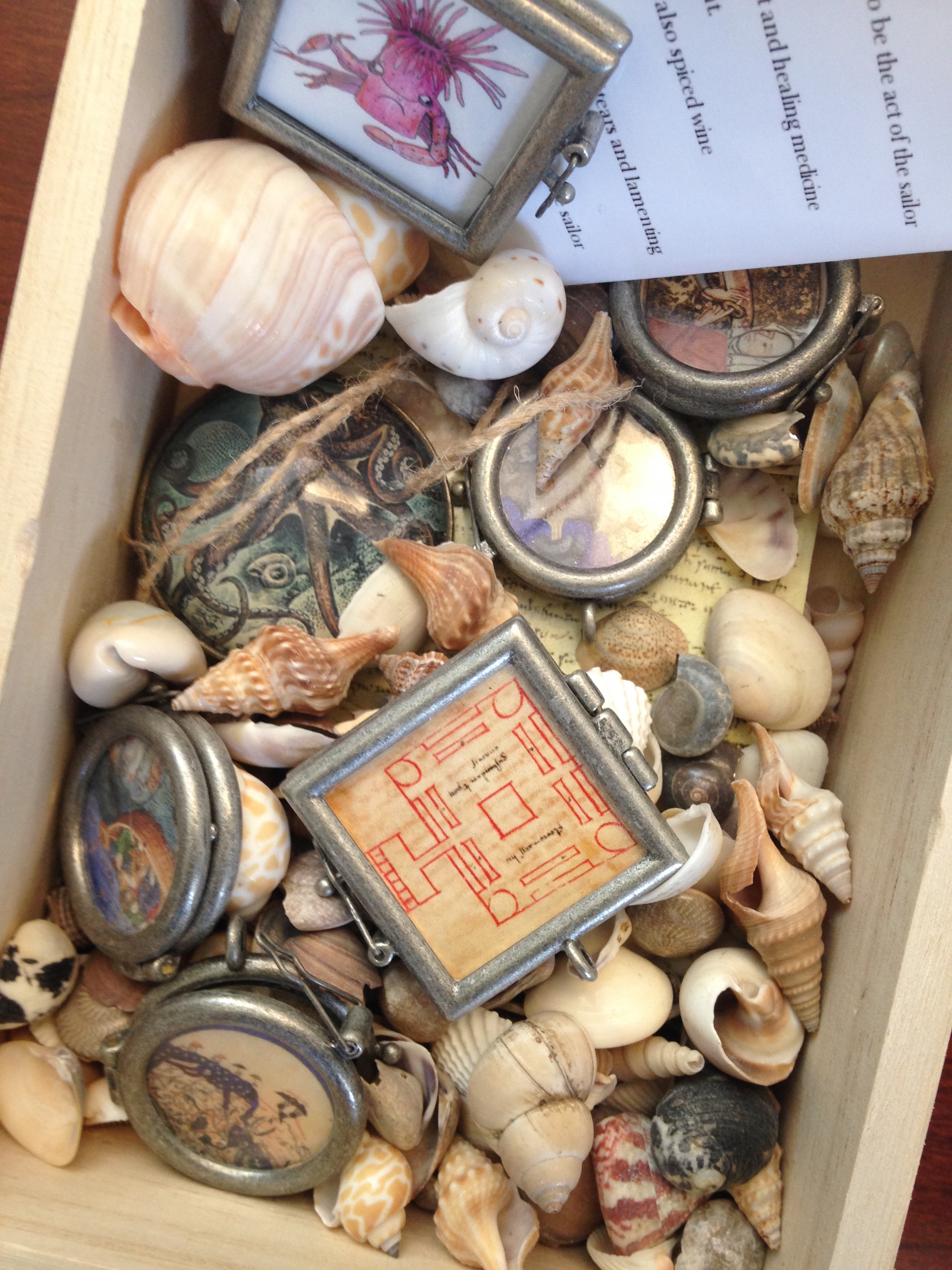
Lara Farina
Department of English
West Virginia University
Images
Babel Box. 2016. Photo by Lara Farina. Treasure box by Helen Burgess.
Fourth Angel of the Apocalypse. c. 1255-1260. Produced at St. Albans monastery? Morgan Library M 524, fol. 5r: http://ica.themorgan.org/manuscript/page/9/110814 .
Gluckhaus. Game board by Janin Wise, 2014: http://janinwise.deviantart.com/art/FREE-11-x-17-Medieval-games-pdf-361111514 .
My First Sperm Whale. n.d. Photo by Julie Tennis. Columbia River Sea Lions.com. http://www.columbiariversealions.com/my-first-sperm-whale/.
Screaming Snail. c. 1501. Marginal image from Bibliothèque nationale de France, Français 701, fol. 46r. (Xenophon, Retreat of the Ten Thousand). Repr. in Discarding Images: http://discardingimages.tumblr.com/post/83446398252/screaming-snail-xenophon-retreat-of-the-ten.
Shell Ear. 2016. Photo by Lara Farina.
Spiral. 2016. Drawing and photo by Lara Farina.
Yerba Santa. 2008. Photo by Liz Bauman. Santa Monica Mountains Trails Council: http://smmtc.org/plantofthemonth/Yerba_Santa.php.
References
Beroul. [12th c.] 1970. The Romance of Tristan. Trans. A.S. Fedrick. New York: Penguin.
Borges, Jorge Luis. 1962. Ficciones. Ed. and trans. A. Kerrigan. New York: Grove Press.
Brennan, Theresa. 2004. The Transmission of Affect, Ithaca, NY: Cornell University Press.
Carroll, Lewis. 2013. Alice in Wonderland. Ed. D. Gray, 3rd edn. New York: W.W. Norton.
Carruthers, Mary. 1990. The Book of Memory, Cambridge, UK: Cambridge University Press.
Carruthers, Mary and Jan M. Ziolkowski, eds. 2002. The Medieval Craft of Memory. Philadelphia: University of Pennsylvania Press.
Chaucer, Geoffrey. [14th c.] 2007. Dream Visions and Other Poems. Ed. K. Lynch. New York: W.W. Norton.
Downes, Stephanie and Stephanie Trigg, eds. 2017. Facing Up to the History of the Emotions. postmedieval 8(1).
Farina, Lara. 2013. Wondrous Skins and Tactile Affection: The Blemmye’s Touch. In Reading Skin in Medieval Literature and Culture, ed. K. Walter, 11-28. New York: Palgrave Macmillan.
Gallop, Jane. 1996. PMLA Forum: The Inevitability of the Personal. PMLA 111(5): 1149-1150.
OED Online, s. v. “wilder.” 2016. Oxford, UK. Oxford University Press. http://www.oed.com/view/Entry/228998#eid14483044.
Remein, Daniel C. 2014. 2nd Program of the Ornamentalists. In Burn After Reading, ed. E.A. Joy, M. Seaman, and J.J, Cohen, 101-104. Brooklyn, NY: Punctum.
Stewart, Kathleen. 2007. Ordinary Affects. Durham, NC: Duke University Press.
Stoller, Paul. 1997. Sensuous Scholarship. Philadelphia, PA: University of Pennsylvania Press.
Trigg, Stephanie. 2016. Chaucer’s Silent Discourse. Plenary address at the Biennial Meeting of the New Chaucer Society. July 14. http://newchaucersociety.org/.